PipingProjects.eu is one of the leading Refractory Anchors Manufacturer in Europe. We specialize in manufacturing high-quality Refractory Anchors that meets the various application and uses of customers. As a trusted Refractory Anchors Supplier in Europe we supply top-notch quality Refractory Anchors to various cities in Europe. Our High-quality Refractory Anchors ungeroes various testing such as Tensile Testing, Chemical Composition Analysis, Hydrostatic Pressure Testing and others so that our clients recieve premium quality Refractory Anchors .
Refractory Anchors are critical components in a wide range of high-temperature industrial applications, particularly in metallurgy, petrochemical, cement, and glass making. These anchors are critical in the installation and stability of refractory materials, which are heat-resistant linings used to safeguard machinery and structures from excessive temperatures, chemical reactions, and mechanical stress.
Bricks, castables, and ceramics are refractory materials used to line furnaces, kilns, boilers, and other high-temperature containers. These linings must tolerate high temperatures and thermal cycles while retaining structural integrity. Refractory Anchors are utilized to keep these linings in place and prevent them from shifting, cracking, or detaching during operation. We are also a well-known Refractory Anchors Supplier in Europe.

Does this product seem useful to you?
Reach out to us now for quick support.
Trusted
Supplier
Genuine
Product
Easy
purchase
Refractory Anchors Specification Chart
| Specification | Description |
|---|---|
| Type | Y Anchors, V Anchors, Studs, etc. |
| Threads | Metric, BSW, BSF, UNC, UNF, and as per costumers requirement. |
| Surface Finish | Blackening, Cadmium zinc plated, Galvanized, Hot dip Galvanized, Nickel Plated, Buffing, etc |
| Size | M3 - M48 |
| Capacity | 1500-3000 KGS |
| Grade | |
| Stainless Steel | 200 Series - 201, 202, 205.
300 Series 301, 302, 303, 304, 304L, 308, 309, 309S, 310, 310S, 314, 316, 316L, 316TI, 317, 317L, 321, 347. 400 Series 405, 409, 429, 430, 430F, 430FSe, 434, 436, 442, 446, 403, 410, 414,416, 416Se, 420,420F, 422, 431, 440A, 440B, 440C. 500 Series - 501, 502. 600 Series - 630 (17-4 PH). |
| Carbon Steel | ASTM A106 Gr. A , B & C API 5L Gr. A / B, X42 ,X52 ,X60 ASTM A 53 Gr. A/B |
| Titanium | Titanium 6-4, Gr 1, Gr 2, Gr 3, Gr 4, Gr 5, Gr 7, Gr 9, 5-2.5, 6-2-4-2, 6-4 ELI, 6-6-2. |
| Hastelloy | C22, C276, X, B-2. |
| Monel | 400, K500. |
| Nickel Alloy | Nickel 200 Nickel 201, Alloy 20, Alloy 286, Alloy 218 (Nitronic 60), Nitronic 50 (XM-19). |
| Cupro Nickel | Cu 90-10 (C70600,CW352H), Cu 70-30 (C71500, CW354H). |
| Inconel | 601, 625, 660A, 718, X-750, 825, 925, 608. |
| Duplex / Super Duplex | D S31803, D S32205, SD S32750, SD S32760, SD S32950. |
| Chromium Molybdenum Steel | A387 Gr 2, A387 Gr 12, A387 Gr 11, A387 Gr 22, A387 Gr 22L, A387 Gr 7, A387 Gr 21, A387 Gr 21L, A387 Gr 9, A387 Gr 91. |
| Nichrome Alloy | CrNi 20/80. |
| Copper | ASTM B1, ASTM B2, ASTM B3, ASTM B152, ASTM B124, ASTM B133. |
| Brass | Alloy 260, Alloy 272, Alloy 330, Alloy 353, Alloy 360, Alloy C48200 - C48500, Alloy 464. |
| Bronze | Alloy 954, Alloy 933. |
| Case Hardening Steels | 10C4, 15C8, 15Cr3, 16Mn5Cr4, 20MnCr5, 15Ni5Cr4Mo1, 15Ni5Cr4Mo2, 20Ni7Mo2, 20NiCrMo2, 14CrNi6. |
| En Series | En8, En9, En19, En24, En30B, En31, En36, En45, En47, En48. |
| Mild Steel | Sae 4118, Sae 4120, Sae 4120, Sae 4130, Sae 4135, Sae 4137, Sae 4140, Sae 4142, Sae 4145, Sae 4147, Sae 4150, Sae 4161, Sae 8620. |
What are Castable Anchors? Advantages of Castable Anchors?
Castable Anchors are a form of refractory anchor used in high-temperature applications with lining materials made of refractory castables. Refractory castables are a blend of refractory aggregates and binders that may be poured or cast into a variety of shapes to make linings for industrial furnaces, kilns, and other equipment. Castable anchors are intended to be inserted into these castable linings in order to improve structural integrity and performance. Here are some of the benefits of using castable anchors:
Refractory Anchors Size Chart
Explore the Refractory Anchors Size Chart for accurate dimensions, essential for efficient installation, and rely on us as a leading Refractory Anchors Manufacturer in Europe for top-quality solutions.
| Type of Refractory Anchor | Typical Size Range (Dimensions in inches or millimeters) |
|---|---|
| Y Anchors | 6" - 12" (Length), 1" - 3" (Width) |
| V Anchors | 6" - 12" (Length), 1" - 3" (Width) |
| Stud Anchors | 3/8" - 5/8" (Diameter), 3" - 12" (Length) |
| Spiral Anchors | 1/4" - 1/2" (Diameter), 4" - 10" (Length) |
| U Anchors | 1" - 3" (Length), 1" - 3" (Width) |
| Knob Type Anchors | 1" - 3" (Length), 1" - 3" (Width) |
How to Maintain Refractory Anchors?
Refractory Anchors must be kept in good condition to ensure the longevity and efficacy of refractory linings in high-temperature industrial applications. Proper maintenance aids in the prevention of premature lining failure, which can lead to costly downtime and repairs. Here are several important steps to keep refractory anchors in place:
What is the Purpose of Applying Coatings to Refractory Materials?
How are Refractory Anchors Typically Tested to Assure the Auality & Performance?
Specific testing methods are used on refractory anchors to guarantee that quality and performance standards are satisfied. These approaches aid in determining if the anchors can resist the harsh circumstances of high-temperature industrial applications. The following are examples of common testing procedures:
PipingProjects.eu is a leading Refractory Anchors Manufacturer in Europe. These are a few examples of Refractory Anchors you can find at Piping Projects in Europe.
Refractory Anchors vs Other Mounting Methods
Production Process of Refractory Anchors
Refractory Anchors is produced in seven steps. It manufactures a wide range of shapes, goods, and parts, ranging from Refractory Anchors and Coil.
Safety Considerations When Using Refractory Anchors
Refractory Anchors Used in Industries

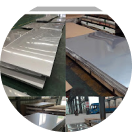
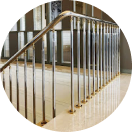
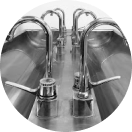
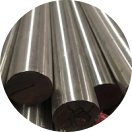
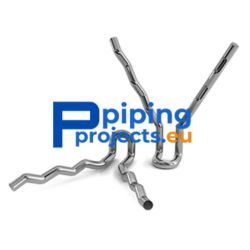
Refractory Anchors Manufacturer in Europe
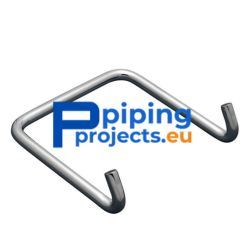
Refractory Anchors Supplier in Europe
